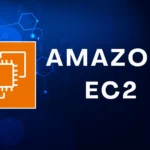
In today’s fast-paced digital landscape, managing secrets like API keys, tokens, and passwords has become a mission-critical priority for organizations. With the rise of DevOps practices, hybrid environments, and cloud-native applications, secrets can easily become scattered across source code, cloud services, and collaboration platforms—making them vulnerable to exposure.
To tackle this growing challenge, HashiCorp has officially announced the general availability (GA) of HCP Vault Radar, a robust tool designed to detect, analyze, and help remediate unmanaged or leaked secrets across diverse environments. With its GA release, Vault Radar introduces an important new capability: the ability to import discovered secrets directly into HashiCorp Vault, transforming detection into immediate actionable remediation.
What is HCP Vault Radar?
HCP Vault Radar is a security tool built to address the issue of secrets sprawl—the uncontrolled distribution and exposure of sensitive credentials. It scans multiple types of data sources where secrets are often unintentionally embedded, including:
- Git repositories
- CI/CD pipelines
- Collaboration platforms like Confluence and JIRA
- Cloud storage such as Amazon S3
- Infrastructure-as-code tools like Terraform
Once secrets are identified, the tool displays them in a centralized dashboard, giving security teams a holistic view of potential vulnerabilities and allowing them to assess, prioritize, and remediate with precision.
Why the GA Release Matters
The General Availability release of HCP Vault Radar brings stability, support, and production-readiness to the tool. Most significantly, it introduces a game-changing enhancement: the ability to import detected secrets directly into HashiCorp Vault, HashiCorp’s widely used secrets management platform.
This new capability bridges the gap between detection and protection. Rather than simply alerting teams to exposed secrets, Vault Radar now enables them to:
- Centralize secret storage
- Rotate or revoke compromised credentials
- Automate the transition from exposure to remediation
By enabling immediate action, organizations can significantly reduce the time-to-secure for sensitive credentials and improve compliance with internal and external security policies.
How HCP Vault Radar Works
HCP Vault Radar follows a multi-step approach to ensure comprehensive secrets management:
- Detection
The tool scans configured sources for secrets like API keys, credentials, and tokens. Its detection engine leverages pattern recognition, entropy analysis, and context evaluation to pinpoint high-risk secrets. - Analysis & Prioritization
To avoid alert fatigue and false positives, Vault Radar performs an in-depth evaluation:- Has this secret been stored in Vault before?
- What is its version and usage history?
- Is it currently active?
- Import & Remediation
With the GA release, detected secrets can now be imported into HashiCorp Vault. Once inside Vault, secrets can be securely rotated, revoked, or assigned dynamic access policies. - Collaboration & Tracking
Vault Radar integrates with tools like Slack, JIRA, PagerDuty, Splunk, and ServiceNow. This ensures findings and remediation steps are communicated and tracked within existing incident workflows. - Contextual Guidance
Based on the type and location of the secret, Vault Radar offers remediation suggestions. This contextual help empowers even less-experienced teams to act confidently.
Addressing Community Feedback
Since its beta release, HCP Vault Radar has earned praise from security professionals who value its proactive approach to detecting and managing secrets. One user noted it as a “powerful tool for detecting and managing secrets sprawl,” underlining its critical role in modern security strategies.
That said, some users have voiced concerns over the complexity and cost of adopting HashiCorp’s broader suite of tools. Navigating the ecosystem and integrating multiple solutions can pose challenges, especially for smaller teams or those new to the Vault ecosystem.
HashiCorp appears aware of these challenges and is continuously working to streamline onboarding and reduce friction in adoption—especially by tightly integrating Radar with Vault, a product already embedded in many organizations’ security stacks.
The Bigger Picture: Why This Matters
In an age where data breaches often start with a single leaked credential, the ability to automatically detect, analyze, and remediate secrets is a huge step forward for enterprise security. HCP Vault Radar represents a forward-thinking solution to a complex problem—helping organizations evolve from reactive incident handling to proactive secrets governance.
Key benefits include:
- Reduced secrets sprawl
- Improved auditability and compliance
- Accelerated incident response
- Minimized human error in handling credentials
As organizations expand their digital footprint across clouds, teams, and tools, the demand for centralized and intelligent secrets management will only increase.
Conclusion
The General Availability of HCP Vault Radar marks a significant milestone in the evolution of secrets management. With its powerful detection capabilities, deep integrations, and the new ability to import secrets into Vault, HashiCorp is empowering teams to turn visibility into action.
While there may be some hurdles in adoption, the benefits in terms of security posture, operational efficiency, and peace of mind are hard to ignore. For organizations seeking to get ahead of secrets sprawl before it turns into a security incident, Vault Radar is a tool worth serious consideration.
Know More : InfoQ
Follow us for more Updates













